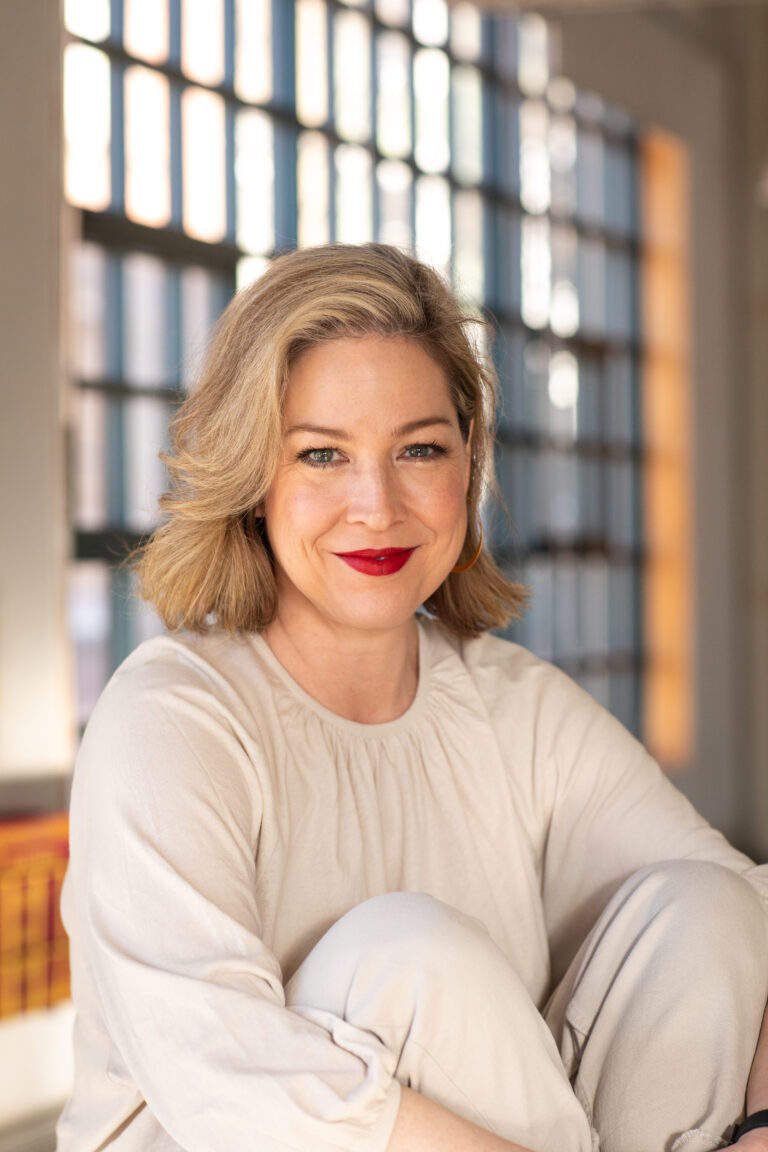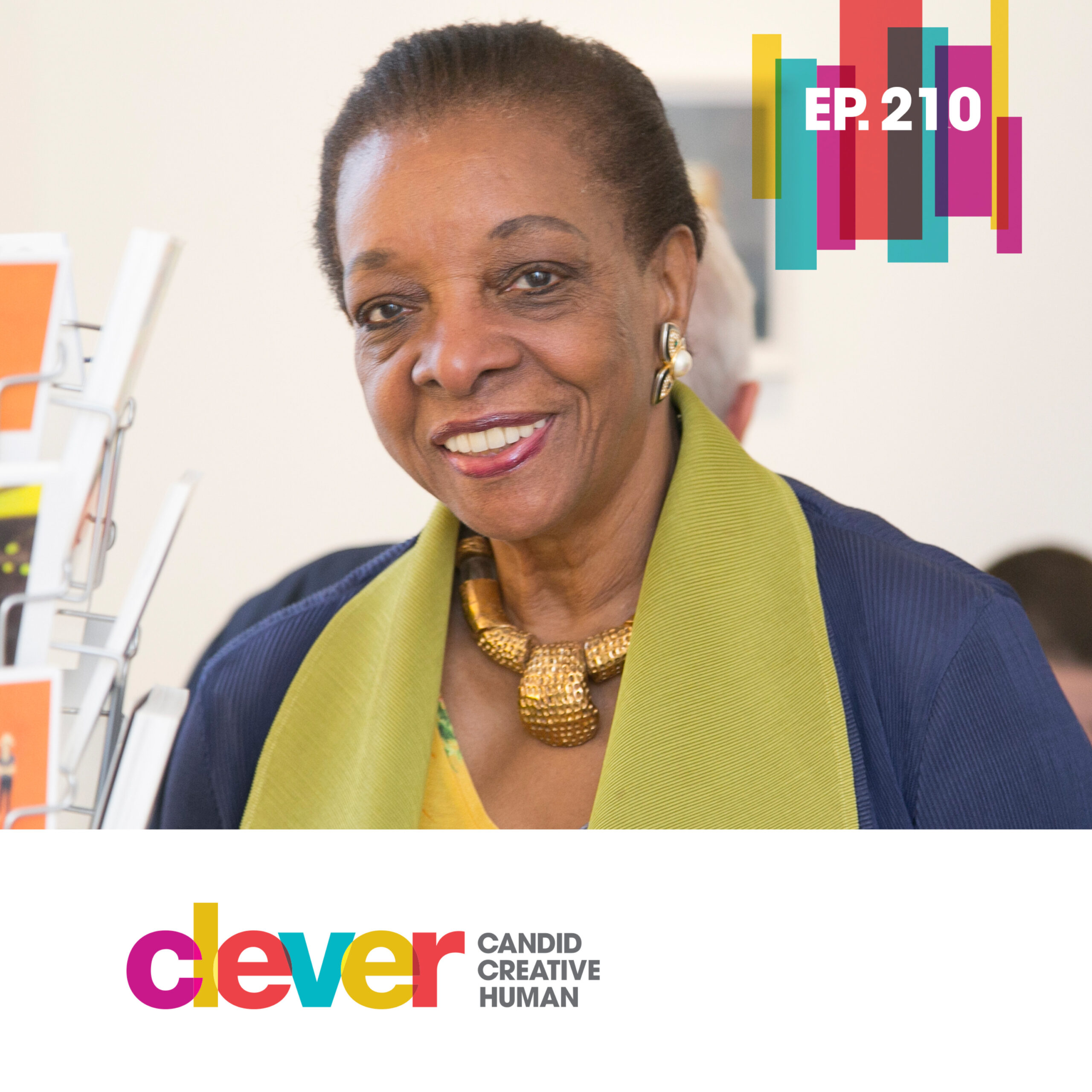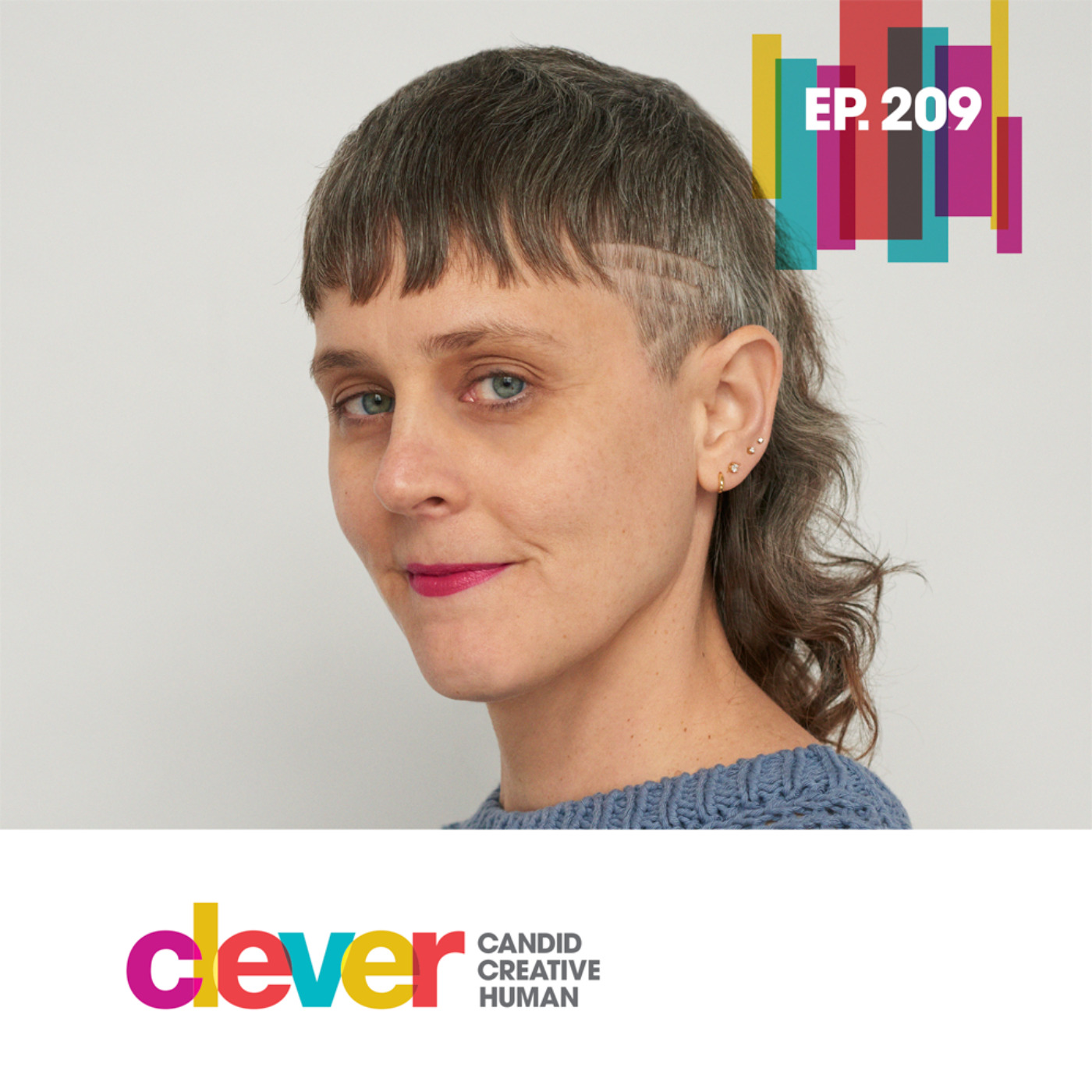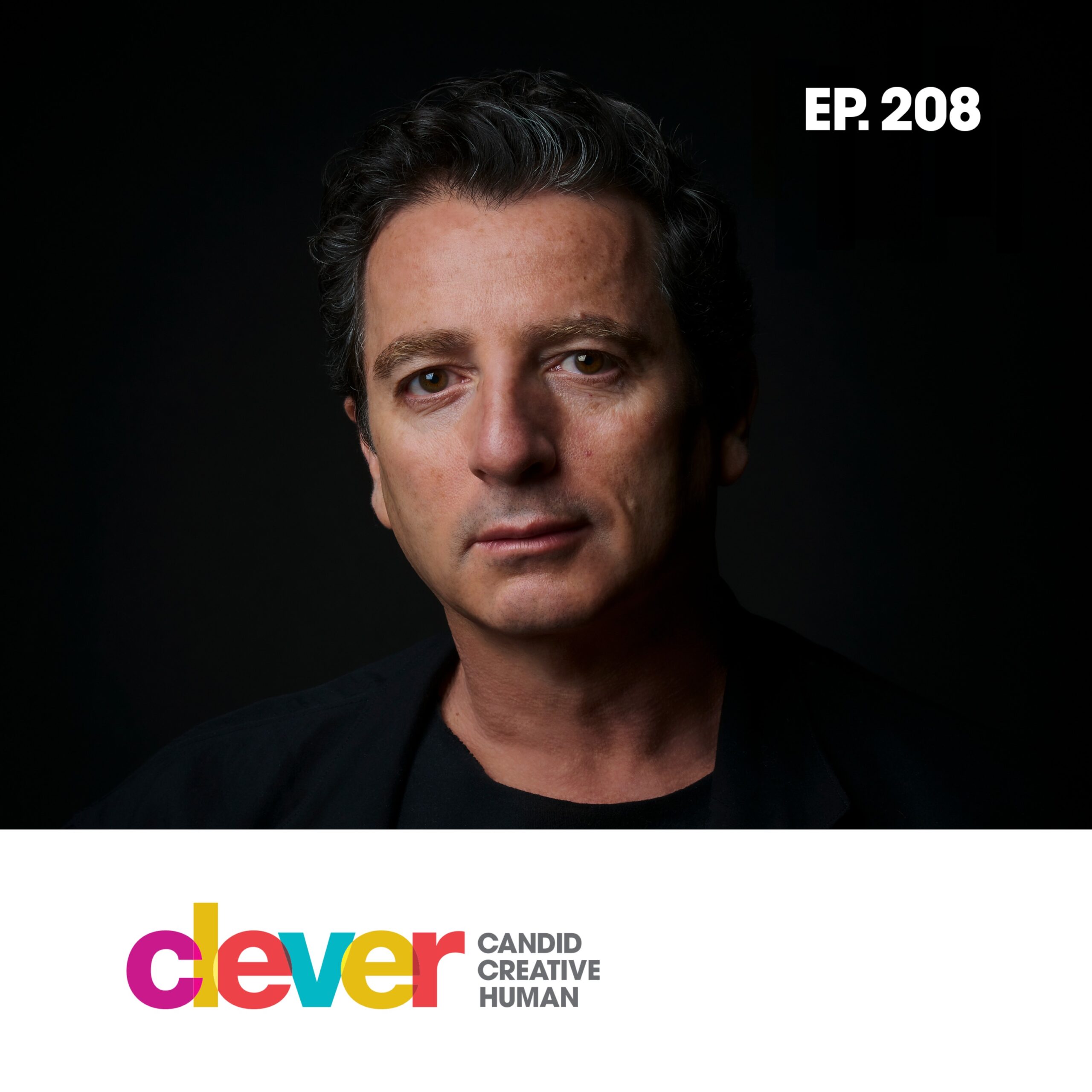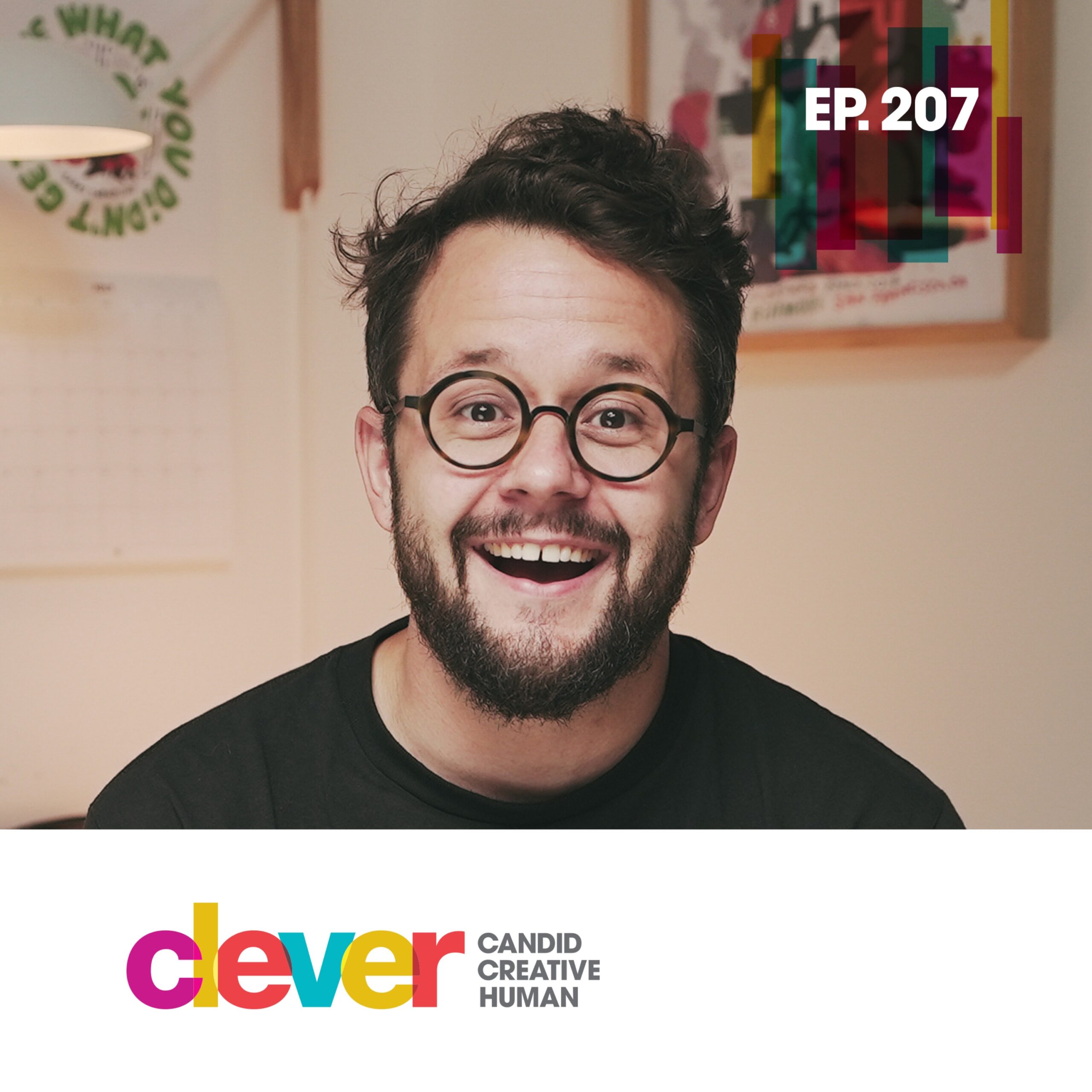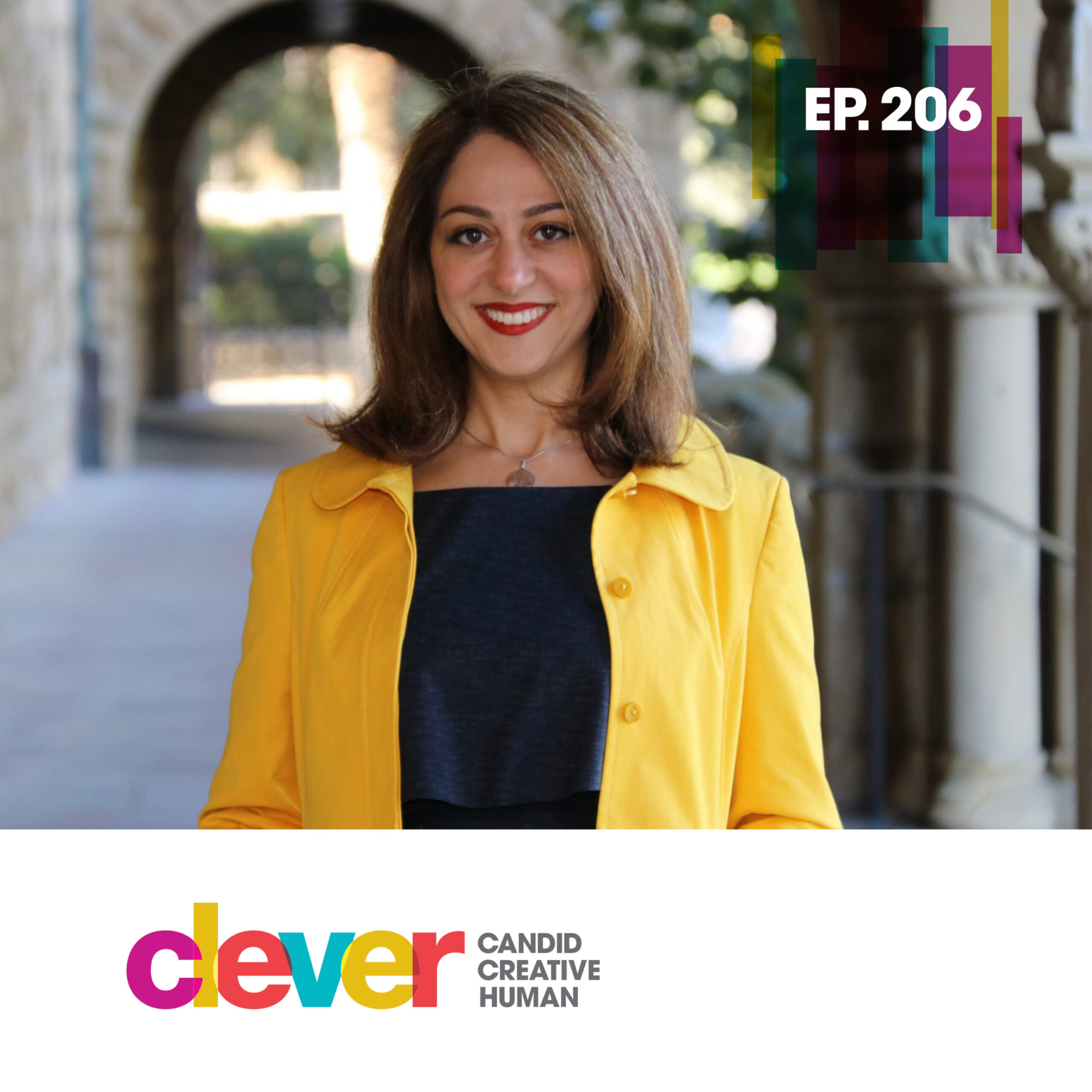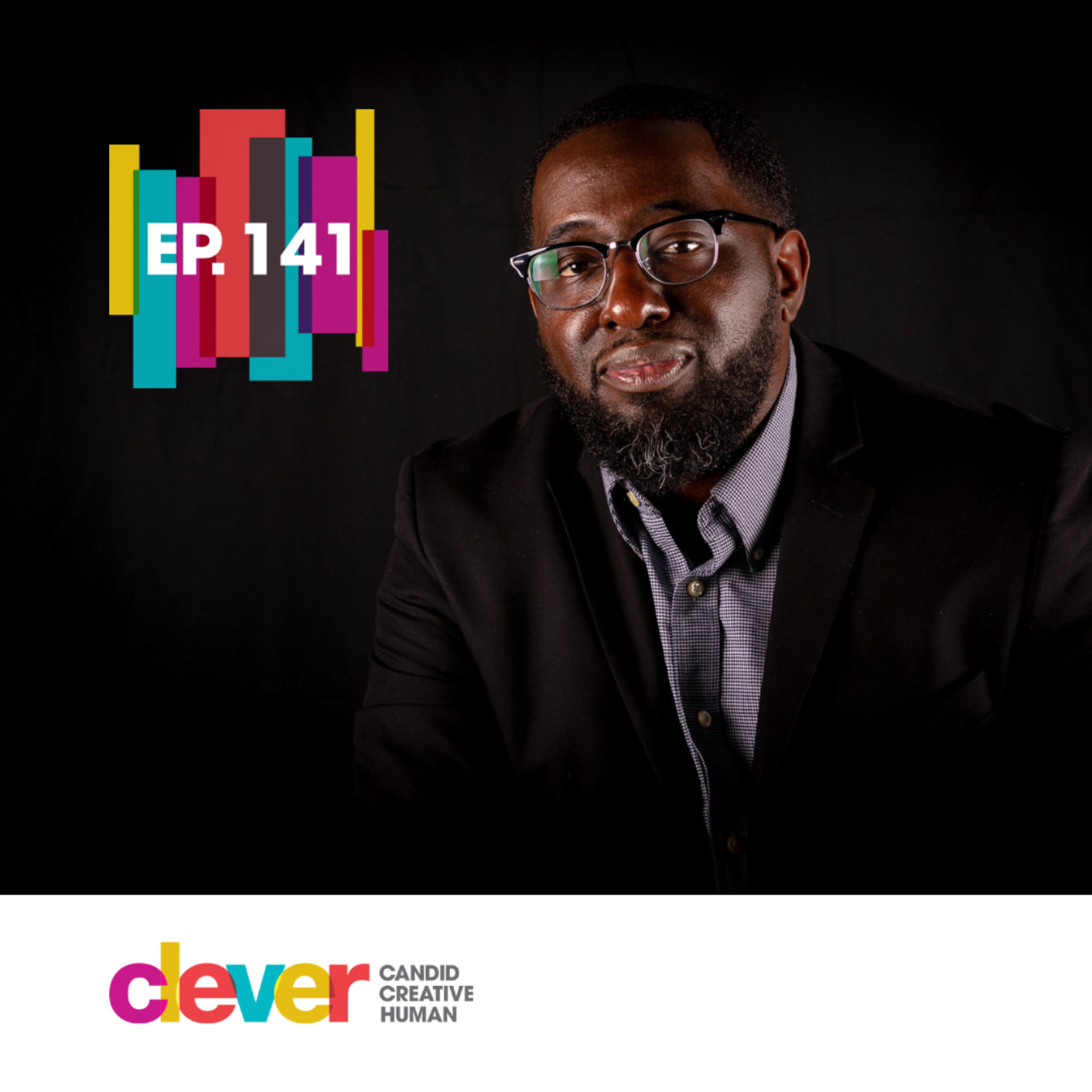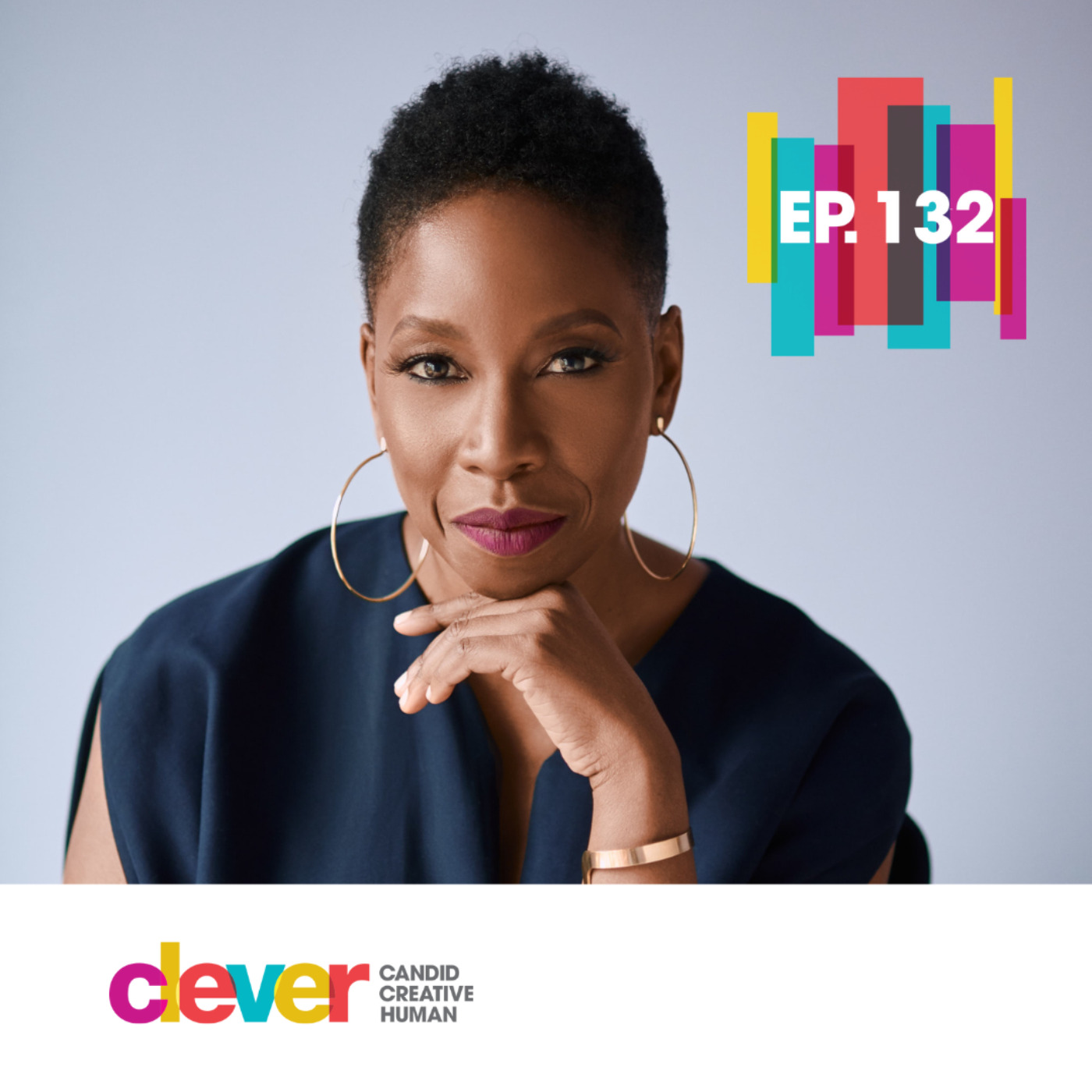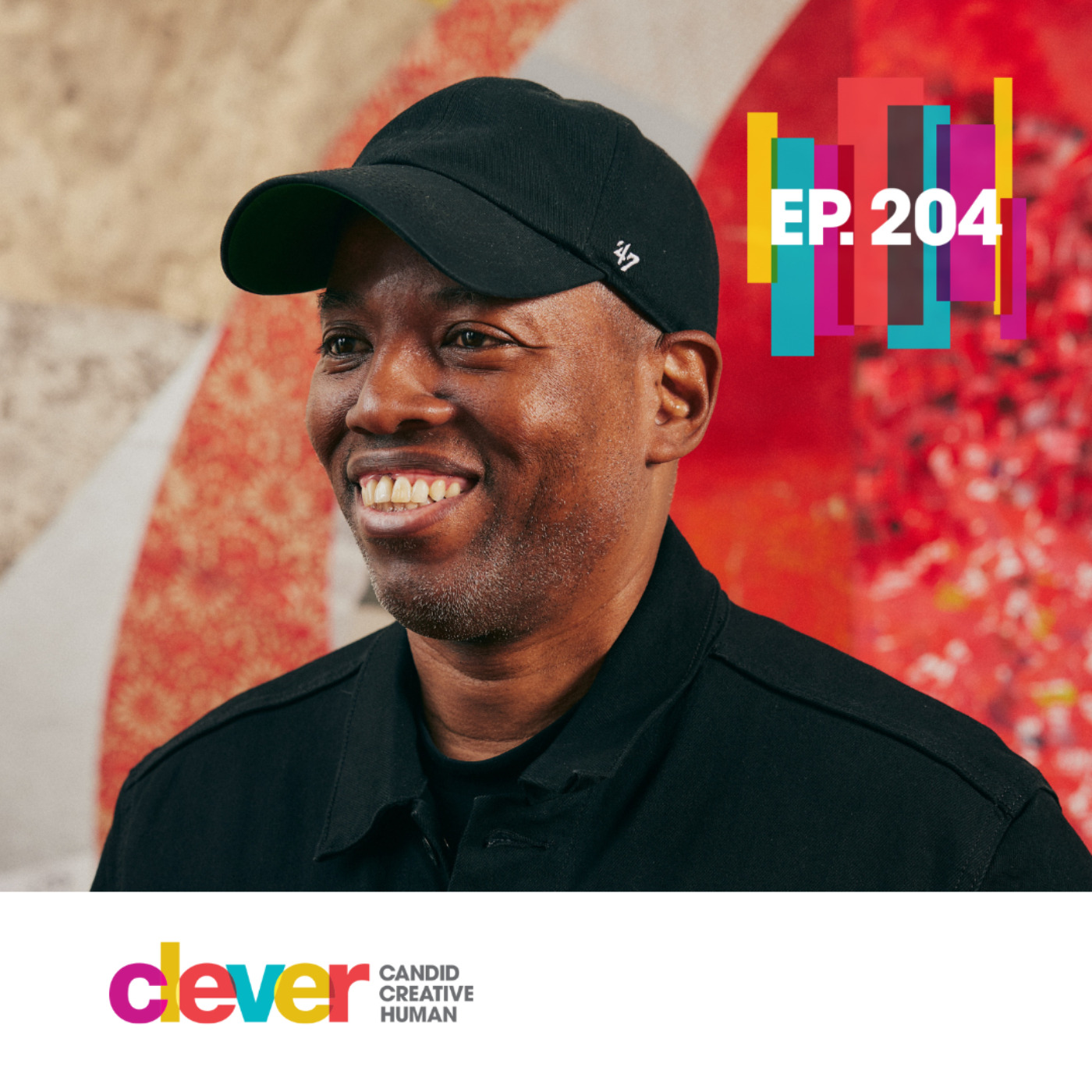Furniture designer Jomo Tariku grew up in Ethiopia in a home full of eclectic objects collected via his dad’s travels. In the U.S. with an Industrial Design degree, he embarked on a mission to change the western canon by designing modern furniture through an African lens. After initial heartbreak and years as a data scientist, Jomo Furniture is now in museums and Black Panther: Wakanda Forever!
Click here for images, links and more from Jomo.
Please say Hi on social! Twitter, Instagram and Facebook – @CleverPodcast, @amydevers,
If you enjoy Clever we could use your support! Please consider leaving a review, making a donation, becoming a sponsor, or introducing us to your friends! We love and appreciate you!
Clever is hosted & produced by Amy Devers, with editing by Rich Stroffolino, production assistance from Ilana Nevins and Anouchka Stephan, and music by El Ten Eleven.
Amy Devers: Hi everyone, I’m Amy Devers and this is Clever. Today I’m talking to furniture designer & maker Jomo Tariku. Jomo is an Ethiopian American artist and industrial designer who is defining a new design language of modern African-themed furniture. His work has been acquired by several museums including the Metropolitan Museum of Art in New York, the Los Angeles County Museum of Art, and the Baltimore Museum of Art, among others. He was recently awarded the 2022 Makers Award from the Black Artist + Designers Guild and have you seen Wakanda Forever? If so, you’ve seen his work, because 12 of his pieces were featured in Hannah Beachler’s production design of the movie. And soon, you’ll be able to see him on an episode of Netflix tv series Made By Design. As you’ll hear, he has racked up some stories getting to this point. He has an indomitable spirit and a contagiously bright outlook… here’s Jomo.
Jomo Tariku: My name is Jomo Tariku, I live in Springfield, Virginia, in the United States. My background is industrial design and I have been focusing specifically on creating African themed furniture for the last 30 years.
Amy: Thirty years! Wow! That’s a nice, long trajectory, I can’t wait to get into that. But before we get into your professional career, you know I love to learn the whole persons story, the person’s whole story. Could we start with your childhood?
Jomo: My dad was a civil servant and worked at the embassy, the Ethiopian Embassy in Nairobi, Kenya. And myself and my younger brother, that I’m very close with, a year and two months apart, both of us were born in Kenya. And my two older brothers were born in Ethiopia.
Amy: And then what was your childhood like? Did you grow up in Kenya or did you grow up in Ethiopia?
Jomo: I grew up in Ethiopia, when I had turned four, probably four and a half, we went back to Ethiopia, so I barely remember my Kenyan childhood obviously at four. But I had the opportunity to go back many times after that. I grew up in Ethiopia, I went to both elementary and what is called middle school in the US, plus secondary school in Ethiopia. Graduated from high school. Went to a Catholic school called St. Joseph, graduated there and came to the US to pursue my higher degrees.
Amy: What kind of family dynamic would you say you had, were your parents very driven and were they encouraging you to excel academically?
Jomo: My father was a refugee when Ethiopia was invaded during WWII, or the pre-dawn of it by Italy, for the second time. So ended up going into a refugee camp in Kenya, so him going back as a civil servant was his second time in Kenya. His first time was as a refugee and the refugee camp is where he learned to read and write for the first time. So the importance of education was extremely important to him, my mum, and it was drilled down into us. The great thing about both my parents, and I do hear this story from a lot of immigrants in the US, when kids start gravitating towards the arts, you usually get lectured, like I didn’t sacrifice all this for you to study art or to waste it.
In my family, I don’t think I’ve ever heard that. The only requirement is, do well in school (laughs), as long as you did well in school, them seeing me drawing and sketching was not as bothersome, probably back then they didn’t think I would pursue it as a study, maybe that’s why. But I really believe partially it’s because my dad also had affinity of collecting artistic things that he’s bought from markets, wherever he traveled. So our house was full of very eclectic objects, mostly from Africa, but not specifically locked into that.
I’m not surprised when I discovered industrial design in the US and studied it. I never had a pushback from my parents saying, “What are you studying?” One could be because I think there was a misunderstanding what industrial design was (laughs), because I remember when my dad came for my graduation and speaking to a relative over the phone, saying, “Hey, I’m in the US visiting,” and I’m assuming the relative is asking, “Hey, how come you’re here?” “I’m here for the graduation of my two sons,” again, me and my younger brother graduated the same year, we went to high school the same grades.
And he said one studied business administration [0.05.00] and talking about me, he said, “My son studied engineering,” and I’m looking at him saying, “I didn’t study engineering.” (Laughs) So it was kind of funny that he didn’t have… at least my dad didn’t have the full understanding of that, I studied industrial design. It’s something I also discovered when I came to the US, I’d never heard of industrial design prior to that.
Amy: Even Americans haven’t heard of industrial design.
Jomo: Yeah (laughs).
Amy: It’s ridiculous to me. So many people that I have spoken to, first of all, yes, I can confirm the immigrants that I’ve spoken to have all confirmed your story. But then also so many of the designers that studied industrial design that I’ve spoken to, just stumbled upon it. They didn’t even know it was something you could pursue until they stumbled upon it. I’m actually really curious about the lead up to you coming to the US to study industrial design. What were you doing as an adolescent that carved the path to making this decision?
Jomo: Here again, I think my dad, unbeknownst to him, or even me, I think played a major role because while transitioning from eighth to ninth grade, summer break, and I think tenth to eleventh grade summer break, he put both me and my younger brother into what would be considered in the US an apprenticeship program. There was a very small woodshop that was punching above its belt for the size of the shop, right in our neighborhood. And he knew the parents of the owner, so he took us over. One reason being, hey, this will keep you out of trouble during summer break.
But for both me and my brother, was something to do during those breaks because my dad was extremely strict. I don’t know how to describe it in the US, but we couldn’t leave our compound. You had a villa, you have a compound, it’s gated. So trouble is outside the gate was his approach. So this was like freedom for us and something to do. It ended up being a great experience, looking back. I think that played a role, me out of boredom during summer break, sketching things around the house, specifically objects and furniture pieces, played a role.
And I think all of this added up to me going to industrial design. Now, I did say earlier I was introduced to it by… once I came to the US. I did not know, and I didn’t come to the US to study industrial design. I was in a small Christian college where one of the professors was hinting, if you’re painting as an elective, and she kept on saying, if you’re good at painting like this, why aren’t you pursuing it full time? That led me to heading out to the University of Kansas with my older brother, trying another summer break thing, after a year of study, trying computer science first and not doing very well at it.
We went to University of Kansas hoping to talk to maybe five or six professors in the art and design program. But lucky for me only one professor was available and had his office open and welcomed us in. And he ended up being an industrial design professor. He pretty much printed out and gave me what industrial design meant. This is 1988, so nothing to Google and find, but to read this thing and you know, this is what I pursued after that.
Amy: So how many of your family are in the United States at the time, just you and your older brother, or you and your younger brother?
Jomo: Yes, ’88, yes, there would be three of us.
Amy: And all at University of Kansas?
Jomo: No, I ended up transferred and my older brother, obviously, by that time had graduated and my younger stayed at the other college that we were going to.
Amy: Obviously you got in through a loophole if your dad thought you were studying engineering (laughter), but did you experience full support from your family, even to make the shift from Ethiopia to the United States?
Jomo: Surprisingly yes, because I think they also noticed, one, I was happy doing that and [0.10.00] I was actually excelling at what I was doing.
Amy: Yeah, okay, those boxes are checked.
Jomo: All boxes are checked, yeah, even when… art school is very expensive, so when I ran out of money, the support was there also. No, it was full support, 100%.
Amy: I’m happy to hear that and tell me about your experience both in the United States, was there a culture shock, but also in the industrial design program, did you feel like you’d found your thing?
Jomo: I did. I enjoyed my studio classes, even though it was a new experience, I did struggle when it came to doing shop work, even though I did that apprenticeship thing as a kid. One thing the shop owner made sure was we did not touch any powered machines; it was all hand related. So transitioning to walking into a shop and doing model building was a challenge for me. Yes, I can come up with the ideas and I can sketch them, but it was a struggle there. But on the flipside I was an extremely driven person. Had never used a computer, for example, when I came to the US.
But I picked up 3D and CAD and all those things pretty quickly. All self-taught during summer breaks on my brother’s computer. So yes, there were challenges, but I felt like nothing I cannot overcome, if I had to stay up all night doing it, yes. There were times I would stay until 3:00am or something in the morning in the studio and I’d be the only one there, or one or two of us, then walk all the way to our apartment, a couple of times being chased by dogs. (Laughs)
The challenges for me was part of the initiation, I guess, into the thing I wanted to do in the future. But on the flipside, I was the only black student also in the program, until my senior year. So until the end of ’93, was when I saw another industrial designer, I guess in Studio One. So that was a huge gap. And this is something I continuously saw in my profession, either within the furniture world or the industrial design world, even up to now.
Amy: It’s definitely an issue. I teach at a university and sometimes there is, some of our black students have very legitimate issues of not feeling supported and/or, like they have a community that they can resonate with. But also, that sometimes the professors are a little bit too steeped in the Western Canon and can’t really effectively talk about work that isn’t European in a way that gives them the same quality of feedback than let’s say somebody who is working in a Western Canon gets. Did you find something similar?
Jomo: Yes and no. When it comes to the challenges, I think, I faced was I really poured in my time at the art library and spent my time there, when I didn’t feel like I found support or people didn’t understand what I was working on. Where I found, my liberation was spending a lot of time [0.15.00] in the library. I had nowhere to go between classes. I was not too much of a partying person or anything like that. So any spare moment was spent in the library pouring through books. But those books also were limited when it came to Africa. On top of that, all the, you can imagine, all the design magazines, be it industrial design ones or the architecture ones or the interior ones, in our library were very heavy on the Western way of design, and that’s what it spoke back to me.
And really the reason I got into my thesis in my fifth year, and I started working on my… what I coined back then, ‘how to create modern line of African furniture,’ you know, obviously from my own perspective and everybody would bring their own perspective. Africa is a huge continent, there’s people in the billions, 54 countries and so on. This is just my view, my vision, what I can put together, from what I’ve learned as a designer and incorporated my culture or my African heritage into it. I saw an issue with the Canon, even back then.
There was a certain way of defining what African design is, when people got around to discuss it. This is an issue we even see now where major museums will do maybe, what you’d consider a very large show or installations on African design, but it would be done maybe once every 10 years, once every 15 years. And then it’s a mad dash to get that going, then we step away for the next time, 15 years. So we’re not even consistently there. We’re there as… our contribution is recognized maybe through cycles of things. It’s like the Olympics, but every 10 years or so.
I saw that in major publications because I was doing research and when I’m doing research, it’s rarely I want to go through magazines, I want a serious book that covers different topics about African design, and I couldn’t find it back then. I’m still having those challenges these days. It’s much better, so 30 years you can imagine things have changed in the right direction, it’s just the speed of change still needs a big push.
Amy: So you did your thesis on contemporary African furniture and in doing that, did you also… I guess it’s a two part question. One, did you feel like it was received and supported, and two, did you feel like you found your point of view and your voice and your way of expressing yourself through furniture in a way that felt authentic to you?
Jomo: Yeah, surprisingly both my thesis won… a professor and my advisor, who I was lucky enough, Janice Smith, who still practices around the Philadelphia area, were excellent supporters. She obviously comes from a studio furniture background. The university didn’t have anyone in that area until she got hired. The timing ended up being perfect for me. In my studio, my Thesis One professor was the person who also introduced me to industrial design. So that mix went well. Thesis Two was a challenge, KU back then it didn’t have the strongest program, from my view.
And I didn’t feel I got the support that was needed. But the jurors who were sitting at our presentation gave me very good points for what I have achieved. So in a sense, maybe not everything went well, but looking back, it started my journey, that was the first pin I put down on this journey. So started back in ’92 as Thesis One, just doing research. Then was into prototyping and making the models and doing the 3D stuff. And 3D back then was extremely difficult, it would take hours just to even render one (laughs), one chair, to find out something didn’t work well.
Amy: Yeah (laughter).
Jomo: Looking back, that decision is what got me where I am now in the things I produce. And why I look back and it makes me very happy with the decision. In thesis we could have gone in any direction. I could have said I’m designing a heads up display, but one of the reasons that made me go this route also was I was, to myself saying, I want to do a full year of work, or two semesters of work that I can take back home if I leave the US and still continue. And if I had been heavily focused on technology related problem solving, from my thesis, it wasn’t something I could take back home and produce.
Amy: As you’re graduating, what are you thinking about in terms of setting up a career for yourself and whether you would stay in the US or go back home?
Jomo: I was in the process trying to decide do I want to go study my master’s, do I get a internship, I didn’t have a work permit, so I had to watch out that my visa wouldn’t expire (laughs), this is a challenge for most foreign students. But in this back and forth, a couple of potential scholarships were offered and really not offered and I lost on those. I was in a no mans land where my visa had expired, but again, faith led me to a lawyer because we were trying to help another immigrant friend of ours who was in immigration prison and the same lawyer, out of nowhere, asked me what I did and I told him I don’t have a work permit. I would be in the same boat as the friend. Then he said, “Are you doing anything special,” and I told him about my furniture. And he said, “You know what, there’s such a thing called a National Interest Waiver, you should apply for it, why don’t you read up on it and see if you think it would work for you, we’ll go ahead and do it.”
Just like the industrial design printout, this is another printout a lawyer gave me and this is probably around ’97 and I said this thing actually fits me and around ’98 I got my green card, 2000 I opened my first studio, I moved to Washington DC and opened my first studio with my best friend from childhood.
Amy: Wow, well, it sounds like you’ve had a few happy accidents along the way.
Jomo: Yes (laughs).
Amy: But help me get to DC with your best friend from childhood, and also by the way, I’m happy to know that you have some brothers and some friends here in the United States. I always worry about loneliness with the immigrant story.
Jomo: I have a lot of friends that graduated from high school with me in the US, even here in DC, DC has the largest Ethiopian population, I think, outside of Ethiopia. So no surprise, a decent amount of my schoolmates and classmates are out here. But the transition to DC was again, back to my thesis. Friends of mine who went to high school with me, happened to be visiting us out in Kansas and a few of them said, “Why don’t we turn this into a business?” As up and coming immigrants trying to get into the professional world, we were just able to raise $20,000 and we said the largest population, number one, of Ethiopian immigrants is in DC, so why don’t we move there? Because we couldn’t afford New York.
Amy: And to be a furniture designer in New York too has always confounded me, just with the sheer needs for space and transporting logs and things like that.
Jomo: Yes (laughs) and we considered all that, when we said, you know what, people have never seen my work, we need to put a show together. The studio cannot be 100% focused on furniture, again, this is 2000, there’s no social media, there’s no Instagram, it is who you know, that opens the doors.
Amy: I think it’s also worth acknowledging, 2000 was a weird time for studio furniture, which you can say your work sort of falls into the studio category, but studio furniture was experiencing a bit of a decline at that time.
Jomo: Yes. Yeah, that’s very true. And to accommodate all this change in the industry and to make sure we have a viable business with this $20,000 we raised, we said let’s have a graphic/web design/video editing… any creative services that is digital, let’s do that. And that will subsidize furniture as we make connections and grow. Then we tried this maybe for eight years, the graphics part was going fine, but the furniture was just sucking a lot of investment and it was not going anywhere. We were not getting traction locally. We were not getting traction anywhere.
We would send press releases, letters, that’s how it was done back then. We couldn’t get anyone to print any of our work to get the word out. I think in eight years, if I’m not mistaken, only three publications printed our work and none of them were local.
Amy: That’s disheartening.
Jomo: Yeah, it was a challenge, it was a challenge where an interviewer from a major newspaper actually set up a meeting for us, she was going to come and interview us, me and my partner, all dressed up in our suits and she just never showed up.
Amy: That’s heartbreaking Jomo.
Jomo: (Laughs) So things like this kept on happening where none of them would pan out. We also had, I remember, a video interview in New York, Architectural Digest, but during recording they had audio problems, so they never put it up and it was never broadcasted. So all that and us having very young families, both of us, the exhaustion, the economy crashing in 2008, even though that year my work finally made it to a museum, I think it was the Chicago Science and Industry Museum had a show on black designers for Black History Month and I was one of maybe 15 or so designers that was being profiled.
And that was the highest thing we achieved in 2008 and the lowest was both me and my partner saying we’ve go to step out, we’ve got to step away from this, we’re exhausted, we’re burned out, we worked seven days and we were going absolutely nowhere. Both of us decided to go find a fulltime job. I ended up at the World Bank Group, which is where I was doing also consultancy work on the side, doing web design again, and print design for them.
So I got employment there in the data and statistics group, so I transitioned out of doing this full time. And making my furniture design work part time, in the evenings, weekends, whenever I had time. The only thing I really walked away from, I walked away from doing work in a shop for about seven years.
Amy: Can I ask you what your state of being was at the time, were you in some ways kind of relieved to have a steady paycheck and not be killing yourself? Were you also a little heartbroken or did you sense that the world just wasn’t ready for your work or…
Jomo: All of it! (Laughter) Yes…
Amy: A complex cocktail of feelings.
Jomo: (Laughs) I really felt deflated that I thought I was doing something unique, everybody in the industry kept on saying, if you’re doing unique work, if you’re doing high craft, specialized work, that should open all the doors and none of that was happening. So I felt like our industry was a bit fake. I kept on saying, and sometimes up to this day, I keep saying, what else do I need to do to keep this ball to the next court? Because it’s extremely difficult and I know everybody says it’s all about talent. No, it’s not, I really feel it’s mostly about who you know and some talent.
Amy: Yeah and sometimes I think it’s also about trends and timing.
Jomo: Yeah, and I understand that could play a role and my timing maybe was off, I’ve been saying that we’ve been missing from the design Canon, the global south has been missing. And I was hoping to be that voice with other people, but again, social media not being robust at that time, there was no one to collaborate with. So I felt like Moses in desert, I’m by myself…
Amy: I feel like you were too (laughter). You also mentioned you had a young family, so can you tell me what was going on at home?
Jomo: I had my first son in 2005 and one followed in 2007, so I have two sons. And again, you worry about family and you worry about healthcare and everything else. You as a single person, especially being an artist, you tend to be extreme risk takers, including financially. Not only health-wise, and those days could not continue for me. And I do have my older son is a special needs son, so I really needed to be cautious about the steps I was taking. Whatever I was doing, should be agreeable to the whole family and not myself. But I have an amazing…
Amy: You sound like a great dad and a good guy Jomo. (Laughter)
Jomo: Thank you, but I have an amazing wife who has been extremely supportive, even when we started my business in 2000, we were dating. She’s been fantastic throughout. And even now, when I stepped away from a very nice job at the World Bank to pursue this, again, she was one of the driving forces behind the scene saying, “You should go for it, you have something special to communicate to this world through the pieces you’re doing.”
Amy: Well, she’s right, I’m glad you have somebody like that in your corner.
Jomo: (Laughs) Yes, same here.
Amy: So you had a nice job at the World Bank, you were a data scientist there…
Jomo: Yes.
Amy: And then you just mentioned, take two, you got back into the furniture game, almost 10 years later, right?
Jomo: So 2008 is when I got the World Bank and 2021 was when I left my day job from the World Bank. I took early retirement and walked away to pursue this fulltime. Because to be honest with you, I couldn’t do both jobs. I couldn’t do the evening work of the furniture and weekends, raise a family and also keep a full time day job. So it was time for me to leave.
Amy: That’s too much, that’s too much…
Jomo: Yes it is, yeah. And it was an amazing job and I was never a data or a numbers guy. One reason I gravitated towards design was kind of, I think, unconsciously walk away from that responsibility. But on the job I learned a lot of things. I learned a lot of tools; I saw how people did analysis. So I extracted all that knowledge and still use it for my own research and I don’t know if you now, one of the things that put me on the map other than working through the Black Artists and Designers Guild was the research I did on black designers who are licensed by furniture companies.
Amy: Yes, I learned about that. I’m excited you’re going to tell us this story because it’s really important what you did there.
Jomo: Thanks, so what I learned at my day job was…if you have data you can tell stories using data. So that’s exactly what I did. You would see it in various design channels or outlets or mediums when black designers or designers of color say there are issues, people would assume or comment that it’s a frivolous thing, it should always be about merit and so on. [0.35.00] And I said, you know what, one way to push back on this silly argument from my point of view was to actually present you the data. When I say I go to trade shows and I don’t see anyone that looks like me, unless you’re the security or the janitorial services or sales people, and I mean it, because I have witnessed it. I have gone to enough of these. But I said, I will show you, even the companies that all of us admire, and I admire these companies. I have their catalogs, I have them in books and everything. Like every designer, we appreciate everybody’s work, it’s just that we’re missing. So one way to demonstrate that was to actually go and scrape all the data, because lucky for me, major furniture manufacturers use their designers as a brandable way to market things and they list them.
So that’s all I did, I extracted that data and published it and I just wanted to see, again, it’s not 100% an accurate way of doing a survey, but no one was going to give me the internal data. So I had to use some kind of guerilla tactic to find out this stuff. And initially didn’t get any traction, but because it was part of a presentation I did at Princeton, African American Program, and I sent it to a journalist. The journalist reached out to a few companies to comment on it, nobody commented, so couldn’t get published.
Unfortunately after the murder of George Floyd, a few of these companies started publishing that blacks were to be supportive, people started challenging them and the same journalist reached out and now those same companies were commenting saying we need to improve. And that’s how the data story got out and it became a topic of discussion.
Amy: And the data, just to illustrate it for our listeners, is you scraped the websites of a lot of major furniture manufacturers for collaborations they were doing with designers and you counted all of those up and you also counted how many of them were with black designers. Correct me if I’m wrong, but as of 2020, you had counted up 4,417 collaborations of which only 14 were with black designers?
Jomo: That’s probably it. I know different magazines might have interpreted that data differently, but at the end it was 0.33% collaboration out of the 150 slightly plus. Now I’ve not done the survey again. I know a few journalists reached out again saying if I have done it again. And my response has been, look, I don’t have the resources you have, why don’t you do it? I just showed you how to do it, as a single individual designer…
Amy: I love that response!
Jomo: Yeah. (Laughter)
Amy: What I think is so important about you doing that initially is we all knew there was a problem, but it hadn’t been adequately named. It hadn’t been adequately quantified and also we hadn’t had it spelled out for us in terms of the numbers. But once it was spelled out in terms of the numbers and the different manufacturers, everyone can assume their own responsibility a little bit more easily. And I’m not sure exactly why that is, but it’s almost like in psychology, when there’s a weird feeling that you have, but you don’t have a name for it, it’s almost hard to own that feeling.
Jomo: Exactly.
Amy: Until it’s been named and you go, oh, this is the thing, other people understand it, we can have language around this, we can talk about it. When you brought up the data like that and the numbers, it clarified for so many people, not just that there was a problem, which we all knew, but the depth of it. And also how simple it could be to make those numbers better. Like one design collaboration at a time, we can just start ratcheting up that 14 to a much higher number and that’s the easiest, most effective way to start solving this problem. I mean obviously it’s endemic and there’s a lot of things that need to happen in terms of getting students into the design school pipeline and so there’s a lot of work that needs to happen there. It’s representation. If you can see yourself as a designer, then you can aspire to it, then you can also make a case for it with your parents.
Jomo: Exactly, exactly (laughter). I’m sure many black designers on Instagram, this happens to them, just as it happens to me, where they receive an IM message saying, I’m so glad to see an accomplished black designer… this is what I used to say to others when I run into them, when I was younger. Now the role has reversed because now I’m in my 50s and yes, I have some accomplishments under my belt. And younger designers are reaching out to me saying, you’re an inspiration, number one. And number two, you are unabashedly promoting your own cultural heritage and your own heritage through your own design, without putting down anybody else. And part of your goal is to also make sure that the Canon of design, which all of us keep saying is a global language, includes us.
Amy: Yes, yes.
Jomo: So it feels good. For me the payback is for all the pain and the 30 year journey, this part is the one that makes me say, it’s okay, it’s okay it took this long. In the hopes that it takes the next generation maybe five years or 10 years, but I still expect the younger generation to do the hard work. To contribute design-wise, in whatever shape or form they think is what they consider as contribution or as good design. The hard work part never changes. It’s just that acceptance of this part.
Amy: Yeah and the path is a little clearer if somebody has been there.
Jomo: I didn’t have that in college and most of the young ones, all the way from… people reach out to me from Africa and that makes my day, personally because I never thought that day would come. So it matters.
Amy: You never thought that day would come, really? How did you stay doing this for 30 years without that kind of hope?
Jomo: I’ve always known, from the moment I did my thesis, I said, “This is it; this is what I want to pursue for the rest of my life.” I’ve found the thing I want to leave behind as a legacy and the goal has been, even as young as I was back then, was to change this industry. And I know a few people have said to me, why don’t you stop saying Africa and African design and black design and just do design? But everybody else is doing that. And I said, we’re missing and the goal is for me to fix it. Most of my friends thought it was an unattainable goal. For some good reason though, I thought even when I was working at World Bank, my intention was when I turned 65 (laughs), I retire, I am going back to this thing, I’m not letting it go. But lucky for me things started picking up and again, I’ll go back to being part of the guild. The guild played a major, major role.
Amy: You’re referring to the Black Artists and Designers Guild, founded by Malene Barnett.
Jomo: Yes.
Amy: But also co-founded by several others, including yourself, in 2018…
Jomo: Yes and Malene and the other co-founders were struggling with similar things. They do all the hard work and the recognition wasn’t there. The things we’re doing were not being published or promoted, we’re not being invited to events and one event that year didn’t invite any black designer when there were almost hundred of them invited either as moderator or panelists. And that’s in New York! So that was the impetus to get the guild started and Malene reached out. I only knew Malene’s work, I’d never met her before.
She tagged me and that relationship started. And the reason I jumped into that was because of my own struggles. I went absolutely nowhere and once this collaborative effort and focused work we started doing, putting shows together, pursuing editors to look into our work, asking to be on the table for recognition of art designers, things slowly started moving in the right direction at a much higher pace than it used to because they’d get, maybe before that one publication every six months and that was like saying, okay, positive movement.
But it didn’t impact me enough to leave my day job. But after joining the guild [0.45.00] and doing all this and participating in a few shows where important things happened, my career started changing. The recognition for my work came by and a year and something ago, the first museum acquisition happened. And the first museum acquisition came from the Met.
Amy: The Met! (Laughter) The Metropolitan Museum of Art, that is quite something.
Jomo: Yeah (laughter), it is, and to a point when I received an email from the Met enquiring about my work, my response was kind of, is this personal purchase or this is for the museum? I couldn’t believe the first museum that would want to buy my work would be the Met. Maybe a local small museum and then slowly grow. I didn’t have gallery representation, so I found the request stunning, but that was… that opened doors into other museums looking into my work and getting to other major museums.
Amy: Yes, now you’ve been acquired by LACMA, the Smithsonian, Baltimore Museum of Art, Denver…
Jomo: The Met…
Amy: Yeah, congratulations!
Jomo: Thank you! This has been a year, almost two years of amazing journey, capping this year was the Black Panther: Wakanda Forever, using 12 of my pieces for their stage design. I know you can barely see them, but for me it’s just… you know, I can always aspire as an artist. If you ask me what do you want to be at the end of your career, I would have said, I would love to have my work in a museum, dead or alive. (Laughs) But in a movie, no, that was not even on my radar screen.
Amy: But still, if we’re talking about changing the Canon, we have to look at Black Panther and Hannah Beachler’s work as a production designer, as absolutely stunning and important and powerful representation of a kind of afrofuturism that is opening hearts and minds and giving lots of people something to look forward to.
Jomo: Exactly.
Amy: To be included in the overall scheme of furniture and objects and things that make up that world, and be locked in that history now and part of that world, that’s amazing! That’s super exciting!
Jomo: It’s amazing! It’s amazing to me and my family in general and every friend and colleague that has collaborated with me. It’s been a fantastic journey. Again, it makes you forget all the disappointing things that have happened all the way to here. There’s still a lot to do for me, as a designer, but the work will continue, hopefully in more movies, more acquisitions, but most importantly, again, I go back to changing the Canon, I don’t want it to be a one person journey. To this point, me and another designer, Norman [Teak 0:48:39], another black designer, we started building a database of black artists.
So when museums and sometimes publications seem to focus only on a few, we send them the list saying, “You need to look into other artists and designers we know.” And again, I’ll admit that list is not complete, but we’ve reached to almost 80…we’ve been lucky enough that magazines reach out to us, museums reach out to us and we are trying our best to make sure it does not become a single person’s journey. We can’t change the Canon if we do that. We’ll have a great career, I’ll admit, but that’s all it will be. The plan is to say there’s a body of work that is as diverse as possible, as you can imagine, from upcycled, recycled furniture, from hand crafted pieces that come all the way from Africa, to designers, industrial designers and other designers doing work that [0.50.00] a licensed artist that are creating one of a kind pieces, all of them are contributing.
It’s not only Jomo or one other person, or two. There’s a whole body, and that is what at the end of the day, what the guild is trying to say to the industry. There’s a whole bunch of us. We need to be equally represented when you write your next book cataloging, let’s say 200 years of furniture or some book title like that. So this is where we aim to change it and hopefully we’re going to get there with support from the younger generation, but also people like me and even younger ones, we have to be cautious about only celebrating the here and now and the ones that are alive. We need to give credit to the older generation who never got into a museum or never got their work published, but they contributed.
Amy: Yes and I also feel this way in many different cultures, the craft traditions that are really inherently included in design, frequently get not acknowledged or somehow disavowed of, as the craft isn’t as important as it is.
Jomo: Exactly, and this is the reason, always interviews like this, they would ask me, “Who is the designer that influenced you the most?” Believe me, I can name few, but I intentionally say the people who influenced me are the people who I’ve never met. The men and women who created the clay potteries when I was growing up or the wooden stools and the different utensils and everything. They didn’t brand, they didn’t sign, they didn’t do anything. But I’m basing my work on their contribution so at a minimum I have to acknowledge that.
Because without them, I don’t have a career, to be honest with you. So it’s not that I don’t want to celebrate another well-known designer, I would love to, but they’ve been celebrated enough. I think the ones that have lost focus here are the ones that have done this with their own hands. So I prefer to pay homage to them, and give my credit for who I am and where I am to them. Even though I don’t specifically have one crafts person working on a specific thing.
Amy: But there’s a beauty to your work that does feel kind of timeless, A, because it’s so beautifully made and you can tell the craft in the work is of the highest quality. B, there is a genuine authentic synthesis of a real point of view that doesn’t feel like a reductive Western take on what African is supposed to be.
Jomo: Yes, I’m glad you said that! (Laughter)
Amy: And there’s a timelessness that comes from, I think, a mix of techniques that are, some are probably as old as humanity and some are probably modern because you filter your point of view through a very contemporary lens. But the marriage of all of it comes together in a very symphonic and beautiful way. And I think that’s what gives a lot of your work such gravitas, not only does it feel so authentically you, but it feels timeless in its craft. I think the craft piece of it is very important.
Jomo: It’s very important and to be honest with you Amy, I can’t say it any better than what you just put it. (Laughter) Because again, that’s the intention, is me marrying what I grew up with and that has influenced me, with my industrial design background, even though I went to school to study fine arts and then changed to industrial design, it’s a marriage of all these. And like I said, in our house we had Norwegian furniture, we had Persian rugs and things from Indonesia, tables and lampshades, it was an eclectic collection…
Amy: It sounds amazing!
Jomo: It gave me appreciation…
Amy: That sounds amazing.
Jomo: Yeah, so it gave me appreciation while I didn’t know the word ‘design’ is a global language back then, it was sitting right in front of me, and I grew up with that. So me synthesizing all of these things into the new things that I’m creating and unconsciously my designs tend to have clean lines, generally. And I love the result, it says this is me, this is my signature pieces, this is how I interpret things. And another designer will go a different way, maybe theirs is more organic or sculptural. So this difference is what I want the world to understand and capture. We are very diverse as designers, as it should be, which is true, even within the Western world. And this should be acceptable for us. Not everything has to be animal print and masks and this is the Western definition of what we Africans produce, but it should be diverse, including the animal prints and masks, that’s it. (Laughter)
Amy: I love your attitude; I can’t see you, but I believe you have a twinkle in your eye, I can hear it in your voice. I’m curious how your life in data science crosses over into your design process now? I see it crossing over in terms of this database of other black designers that you’re keeping, in terms of the piece you did where you tracked the data around black designers. But other than strictly data, how is it filtering into your furniture pieces?
Jomo: I don’t specially do… for example, ergonomics is all about data, but there’s been a decent amount of studies there, I don’t need to reinvent the wheel. For example this latest chair I did, the Qwanta Chair was based on an ergonomic drawing, with all the scales added to it. And it’s a lounge chair, what the dimensions should be, so for me initially I used those dimensions to make my new chair ergonomic, but the thing I didn’t incorporate into it was that my chair doesn’t have an armrest. And I remember I got the mold done for the veneer bending and I propped it up and I sat on it and I couldn’t get up because I didn’t have an armrest.
Amy: Yeah! (Laughs)
Jomo: I had to stack every piece of sheet product I had around in my shop, stacked it up, angled it the best way, propped up the backrest and I said, once I started getting up, I said, “Now I’ve found the…” yes, specifically this is not collecting ridiculous amount of data while I’m googling, but is in a way data collection on a chair that would not have an armrest (laughter), you should be able to get off it.
Amy: Yeah! (Laughs)
Jomo: So if it is already there, I’m not trying to reinvent things. Where I prefer to use my data is again, doing analysis on our industry. Going back, human factors have been practice or ergonomics has been practiced here for a while and we’ve collected, at least when it comes to furniture, we’ve collected a decent amount enough that I don’t need to add anything to it, other than just testing my own pieces to check if they’re actually ergonomically correct. My goal in my design is for them to be functional, unique, sculptural and artistic.
Amy: Check-check-check-check, you’re winning on all of those accounts.
Jomo: In that process, if I need to do additional research, other than just testing it between me and my furniture builders, who are obviously taller and larger than me, so we test it between two of us, then of course when it comes home, my wife tries it, so you know, it’s a small company and our test basis is just as small. But if it can handle three of us, our approach for now, is it can handle anyone. Most of the time people buy specially my chairs to collect it as an art piece, and my understanding is barely anybody uses it. They’re displaying it as one of a kind piece in their residence. But if you want to sit on it, it works just fine.
Amy: Yes, but I wouldn’t let anybody come over and sit on that chair. (Laughs) If they’re going to have a pen in their pocket or keys, then they’re going to scratch it and then I’m going to be mad. (Laughs) So shifting gears a little bit. You’ve led such an interesting life. You’ve had feet in both worlds of Africa and the United States, feet in both worlds of data science and furniture design. And now you’re experiencing a kind of tremendous success, which is fantastic and I wish you more of it. I’m assuming you’re doing a lot more interviews these days and my question for you is: What is nobody asking you that you feel needs to be discussed?
Jomo: Oh, wow, I don’t have anything at the top of my head because if they’ve not asked, I have injected those things…
Amy: Good for you! (Laughter) Good for you!
Jomo: Like I said, the big picture for me has always been the issue of Canon and rising tide lifting everybody. And as long as I’m seeing that and I talk to that with a platform I’ve been given, including shows like yours, or when I’m invited for panel discussions or to lecture or give presentation…
Amy: Or soon you’ll be featured on the Netflix TV series, Made by Design.
Jomo: Yes, there’s that. One thing I can add is, we’re also shooting a film that will tell my story from my angle, edited with a team that I trust and hopefully we’ll release that in a year or so.
Amy: Keep me posted!
Jomo: There’s got to be a way to visually tell my story, so we’ll have that, hopefully soon.
Amy: That’s an interesting project, I want to keep tabs on that, please keep me posted.
Jomo: Yeah, we did a shoot at Design Miami, Wexler Gallery is representing me beginning this year. We started the relationship about five months ago and it’s been going well. But we wanted to capture that journey, going first time showing Design Miami, obviously the film and so on. But there is a story, like we just discussed, that predates that and hasn’t been easy. So we want to document that and this is what I also try to encourage other black designers or any others designers, make sure it’s not only about portfolio. If your life is a journey to accomplish something, you have to figure out how to document it, how to present it because at the end of the day, we’re going to pass and what’s going to be left is our work. And if you’ve not been able to tell your story from your angle, well, somebody is going to tell it.
Amy: Hear! Hear! And I’m so happy to hear you taking this on and one of the things that I champion as a podcast host, but also as a professor is this idea of owning your own narrative. You have to be able to tell your story and you have to believe that the telling of that story is actually nutritious for all the people around you who will consume it. It will change their filter on life, to be able to digest your story. And in important ways. You can’t really have control over how everybody receives your story, but you can have control over how your story is told.
Jomo: Exactly! I agree.
Amy: Well, this has been delightful. I guess my last question for you is you seem to be on an exciting trajectory and you’ve worked really hard to get here, so congratulations. What and where are you hoping to expand? Obviously in changing the Canon, but if you want something for your personal self, like a fancy vacation, that’s acceptable too.
Jomo: (Laughter) Well, I always want a fancy vacation, my family wants a fancy vacation (laughter), they haven’t gotten that out of me. I only have one big hurdle that I’m struggling with right now, is by the mere fact I live in one of the most expensive places to live, Washington DC, or the outskirts of that, is not being able to expand and open up my own fabrication facility. [1.05.00]. I want to have more control over things I make. I want to be able to come up with new ideas and whip it up quickly and not wait too long to plan and all that, to do new things.
Right now I’m pretty limited with where I am. I’m speaking to you from my basement right now, and I want out. I want to have a real shop, have a few other young up and coming designers working with me and learning something from me so they can leave there and hopefully do their own thing. But also control my destiny a little bit more. That’s the goal for the next, hopefully five to 10 years.
Amy: That’s a beautiful goal, I hope you achieve it and I hope you achieve it in two to three years.
Jomo: (Laughs) Thank you, I need that!
Amy: Faster than you can imagine.
Jomo: Who likes to wait? I don’t like waiting!
Amy: Listen Jomo, it has been delightful. Not only speaking to you, but digging into your story and learning about your life and what you’ve done and your perspective on the world. And I just really appreciate you sharing that with me, thank you so much.
Jomo: Thank you Amy for giving me the platform to talk about myself and my work and obviously the guild, which is very important to me and everything else in between, I really appreciate it.
Amy: Hey, thanks so much for listening. For a transcript of this episode, and more about Jomo, including images of his work, and a bonus Q&A – head to cleverpodcast.com. If you can think of 3 people who would be inspired by Clever – please tell them! It really helps us out when you share Clever with your friends. You can listen to Clever on any of the podcast apps – please do hit the Follow or subscribe button in your app of choice so our new episodes will turn up in your feed. We love to hear from you on LinkedIn, Instagram and Twitter – you can find us @cleverpodcast and you can find me @amydevers. Please stay tuned for upcoming announcements and bonus content. You can subscribe to our newsletter at cleverpodcast.com to make sure you don’t miss anything. Clever is hosted & produced by me, Amy Devers, with editing by Rich Stroffolino, production assistance from Ilana Nevins and Anouchka Stephan and music by El Ten Eleven.


